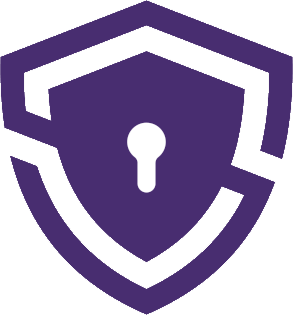If you need to change your IP address, there are multiple ways to do it. Some of them are more reliable, others might be less secure. In this article we will go over the most common ways to change your IP address in a matter of minutes and for free.
1) Change your IP address using VPN
In short, using VPN to change the IP address is probably the most reliable and efficient method which can be free as well.
A VPN is short for Virtual Private Network. It encrypts your internet connection, routes it through a server at a location you choose, and then encrypts it. Websites, online services and other devices will only see the IP address of the VPN server and not your actual IP address.
VPNs can be used to torrent, unblock region-locked content such as Netflix and BBC iPlayer and bypass censorship in schools, offices and countries like China.
Most VPNs can easily hide your IPv4 address, but many VPNs can leak your IP address through various security vulnerabilities. Not all VPNs can hide your IPv6 address. You should choose a VPN that can either disable IPv6 by default or prevent IPv6 leaks.
Here are the steps to change your IP address using a VPN.
- Sign up for a suitable VPN provider (check our top picks here)
- Get the right VPN app for you device.
- Open the VPN app, and choose a server. Servers within your country are fine. However, if you need to access a particular service, make sure it is unblocked.
- That’s all! Now you should have a new IP address.
2) Use Tor browser to change your IP address
You have probably never heard of Tor. It is a special browser that connects you to a private network, and a whole host of other websites. Tor Browser anonymizes web traffic via the Tor network. This makes it easy to protect yourself online.
The Tor Browser may be the best option for you if you are looking for information on a competitor or researching an opposing litigant in legal disputes.
There are a few caveats. Tor browsing is usually slower and some major web services doesn’t work with TOR. Tor Browser is also banned by authoritarian regimes who want to restrict citizens’ ability to read, publish, and communicate anonymously. Dissidents and journalists around the globe have adopted Tor as an essential part of democracy online. Researchers are working hard to improve Tor’s anonymity properties.
It is as secure and safe as you would like it to be. It might not be. There are many dark corners in the “hidden Web,” which could lead to malware and shady characters. You can learn more about the Tor browser.
Tor is free and easy to set-up. It will provide you with all the internet services you expect. In most cases, you can get up and running with Tor in under 15 minutes. Just go to the Torproject.org.
3) Change your IP address by unplugging and connecting again your router or modem.
You can also change your IP address by turning off Power Supply to Modem/Router, and then switching it on again after 5 minutes.
If your Internet Service Provider is kind, they may assign a new IP address to your Router if it has been disconnected from internet.
It is however better to verify this by entering “What is My IP?” in Chrome or any other browser on your computer. Alternatively you can use our free tool to find out your IP address.
If the IP Address is not changing, you can try unplugging the Router for a longer period or leave it unplugged overnight.
Unlugging your router to change IP address has been also discussed on reddit and some users claim this works fine, others say this might not help.
4) Change your IP address using Proxy server.
A Proxy is another way that will make you appear to be in another country. You don’t need to download any software and you can only connect for one app.
You can use a proxy to set your internet browser to send your traffic to different servers, hiding your IP address. This allows you to hide your IP address and your location. This is useful if you need to access blocked sites in your country.
A proxy can be used for several purposes, but the main one is to bypass Geo location blocks or other blocks that are placed on websites by libraries, schools, or universities or to change IP address.. If a library blocks access to a social networking site, you may use a proxy to gain access.
Different types of proxy
There are many types of proxy that can cover almost any configuration you can imagine however the most common ones are:
- Transparent proxy: Transparent proxy is the simplest type of proxy. They transmit all your information, but only the proxy’s IP address. These proxy servers don’t provide any privacy protection. This tells the server that your request is being sent through a proxy. This will allow you to bypass simple IP bans. One common use of transparent proxy is to set up website filtering like schools or companies.
- Anonymous proxy: Anonymous proxy servers are a common type of proxy. Although they won’t pass your IP address to any website you visit, they will identify themselves in the request as proxy. This allows you to keep your browsing activities private. These are standard proxy options to use if you don’t want targeted ads following your around the internet, or if you don’t want your address attached to your request. Although this is sufficient to avoid most targeted ads, there’s still the possibility that your information could be disclosed.
- Public proxy: These are the most unreliable and insecure proxy types. They can be taken down at any time and many of them are used by hackers to steal data. They are free, which is why people continue to use them. Although it’s not difficult to find lists with free public proxy addresses, it can be challenging to find quality ones. It’s impossible to know the host of these proxy servers and it is a risky business to transmit any sensitive information through them. A public proxy can be used by any number of people at any given time, and no one regulates who uses it.
- Reverse proxy: Reverse proxy are totally different to everything else we have covered. Reverse proxy hides an IP address from the server to which you are trying to send a request. These types of proxy are useful when a server requires security and privacy for clients. Proxies can be used to prevent clients from having unmonitored or unencrypted access to a server. This can help reduce network traffic by transmitting cached information rather than making each query.
What are the types of IP addresses
- IP Version 4 IP address: An IPv4 address uses 32 bits to identify itself. There are 4 billion IPv4s available.
- IP Version 6 IP address: IPv6 is the successor to IPv4. It uses 128 bits so that there are more addresses. Because there are only 32-bit IP addresses, this IP address was created.
- Public IP Address: It is also called an external IP Address. This address is assigned to your device. It changes every time you establish a network connection. This is how your devices communicate with other networks.
- Private IP: This address is not shared with any external networks. Instead, a personal IP address is what your devices use when they connect to each other on private networks. An example is the connection between your PC and your printer. This would be a private IP address. Each device on your private network gets its own private IP address.
- Local IP Address: Your local IP address acts in the same way as a private IP adress. It is used in private networks to link devices. Every device receives a local address from your router through the DHCP service.
- Dynamic IP: Another DHCP server generates a dynamic address each time a device connects with the network. This temporary IP address can be shared with other networks.
- Static IP Address: Instead of being assigned by a DHCP Server, static IP addresses can be manually set. This address is also known as a fixed IP Address or dedicated IP Address and is less common than a dynamic address.
FAQs
Is changing your IP address illegal?
Not at all. Changing your IP address is completely legal although you should always consider the method you use to change your IP address. Some countries such as China, Iran, Turkey might be restricting use of VPN services and you will have to consider other options.
How can I change my IP address without VPN?
You don’t need a VPN to change your IP address although it is often the most reliable and fastest way to change your IP address.
Can I change my IP address for free?
Yes, you can! You can either subscribe for a VPN with 30-money back guarantee and request a refund later, use a free proxy service, download a Tor browser or try to do it with your router. The most reliable option is to use a VPN.

